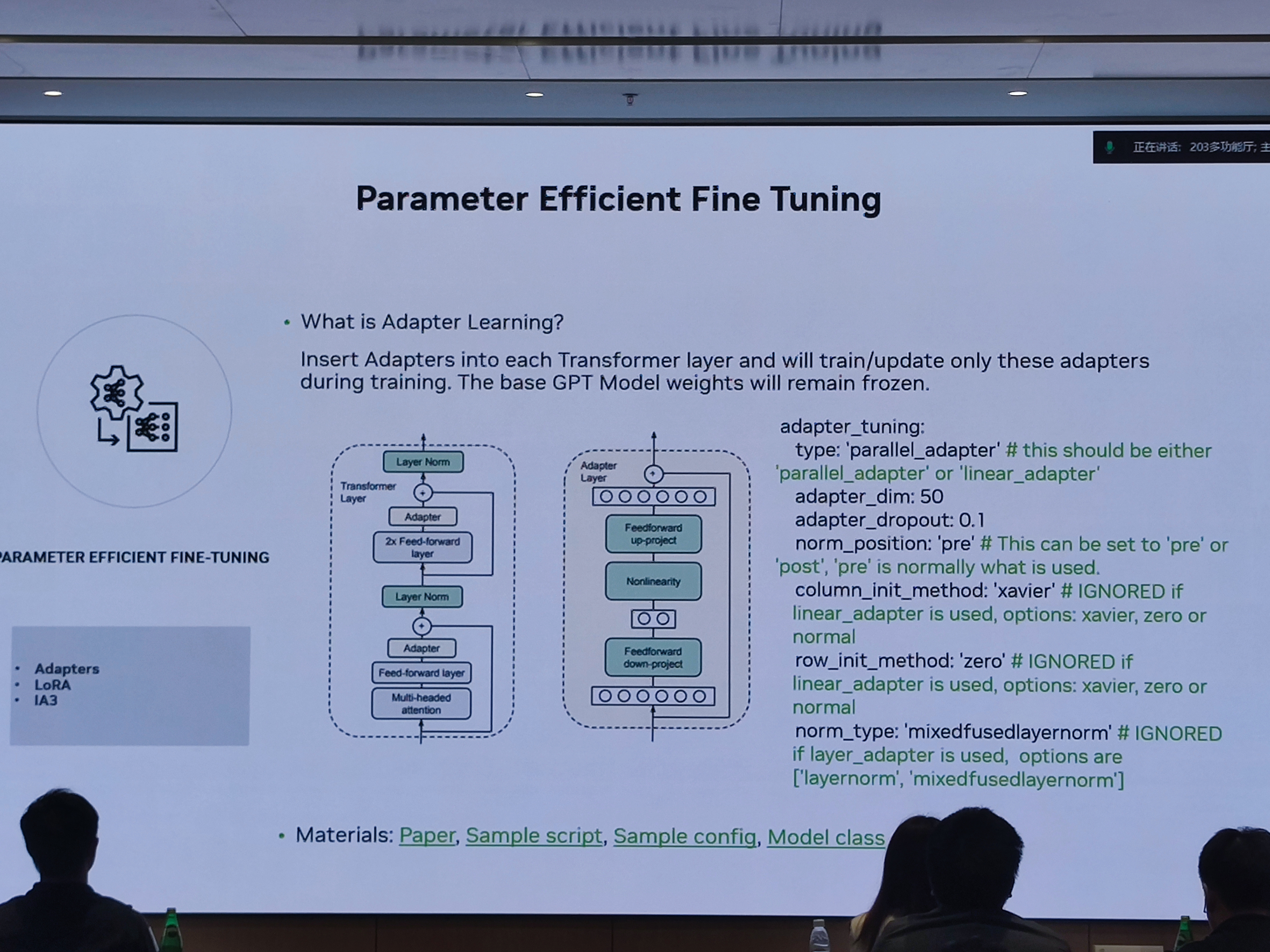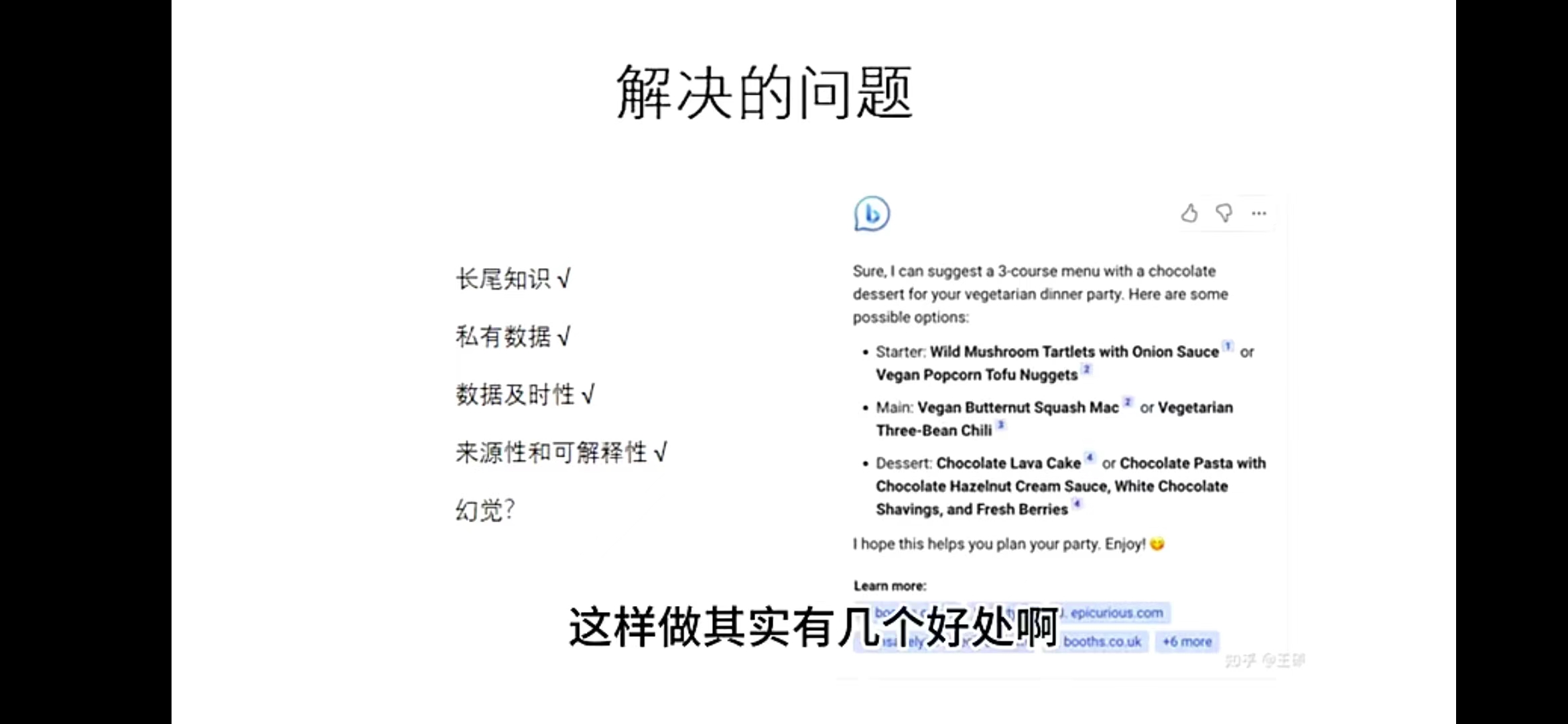主要参考资料:
还没搞懂嵌入(Embedding)、微调(Fine-tuning)和提示工程(Prompt Engineering)?: https://blog.csdn.net/DynmicResource/article/details/133638079
B站Up主Nenly同学《60分钟速通LORA训练!》
B站《【科普向】什么是RAG检索增强生成?让LLM更靠谱的外挂》
三者区别

要想知道模型问题的解决方案,首先要知道模型的知识构成。
大模型正常有三种只是路径:大模型训练的语料(蓝图)、用户输入的文本(绿图)和引入外部知识库(橙图)
仅由大模型训练的语料(蓝图)和用户输入的文本(绿图)组成的就是我们经常用的底模,但是这通常会导致1出现幻觉。
仅使用大模型训练语料(蓝图)和外部数据库(橙图),就是3微调(Fine-tuned)了。
仅使用用户输入的文本(绿图)和外部数据库(橙图),就是我们平时使用的搜索了,它不需要自然语言输入、对话管理和大模型。
而把大模型训练的语料、用户输入的文本和外部数据库结合起来,就是4检索增强生成(RAG,Retrieval-Augmented Generation)。

提示工程(Prompt Engineering)
如果没有良好的提示设计和基础技术,模型很可能产生幻觉或编造答案,其危险在于,模型往往会产生非常有说服力和看似合理的答案,因此必须非常小心地设计安全缓解措施和地面模型的事实答案,所以提示工程应运而生。
微调(Fine-tuning)
微调通过训练比提示(prompt)中更多的示例来改进小样本学习,让您在大量任务中取得更好的结果。对模型进行微调后,您将不再需要在提示(prompt)中提供示例。这样可以节省成本并实现更低延迟的请求。
下面是Nvidia Inception大会上的两张图。微调大致可以分为参数优化微调(Parameter Efficient Fine Tuning)和全量微调(Fine Tuning),典型的就是LoRA方法和SFT。


LoRA微调
模型权重:在深度学习中,模型的权重(Weights)是指神经网络中的参数。这些参数用于调整和学习模型的行为。而参数的存储方式就是矩阵。
LoRA做了两件事:
(1)"冻结"了原来的权重,在旁边另起了一个单独的“微调权重”来进行训练。

(2)“降本增效”。主要参考资料里的微软论文研究发现,微调前2行2列的效果与等于计算全部行列(LoRA有两个转换器,一个是把“满秩”转换为“低秩”,方便微调,另一个再将“低秩”转换为“满秩”。矩阵的“秩”是线性代数的一个概念,描述了这个矩阵的信息丰富度和多样性。)
检索增强生成(RAG,Retrieval-Augmented Generation)
RAG的整个过程就是先外挂一个知识库,大模型生成内容时需要先检索知识库,搜索相关知识,再输入到prompt里。
(1)数据提取(2)做embedding(3)大模型检索

这样有几个好处
(1)可以把原本不包含在大模型训练知识里的长尾知识被检索到。
(2)私有数据仅仅是被检索的话会安全很多
(3)可以实时更新数据
(4)数据来源和可解释性会增强
(5)幻觉问题可能没有很好被解决(这与Fine-tuned不同)

























 206
206

 被折叠的 条评论
为什么被折叠?
被折叠的 条评论
为什么被折叠?








